Chris Parkin takes a look at the Weatherby Mark V Carbonmark, a rifle that stays true to its American roots while still embracing the very latest tech
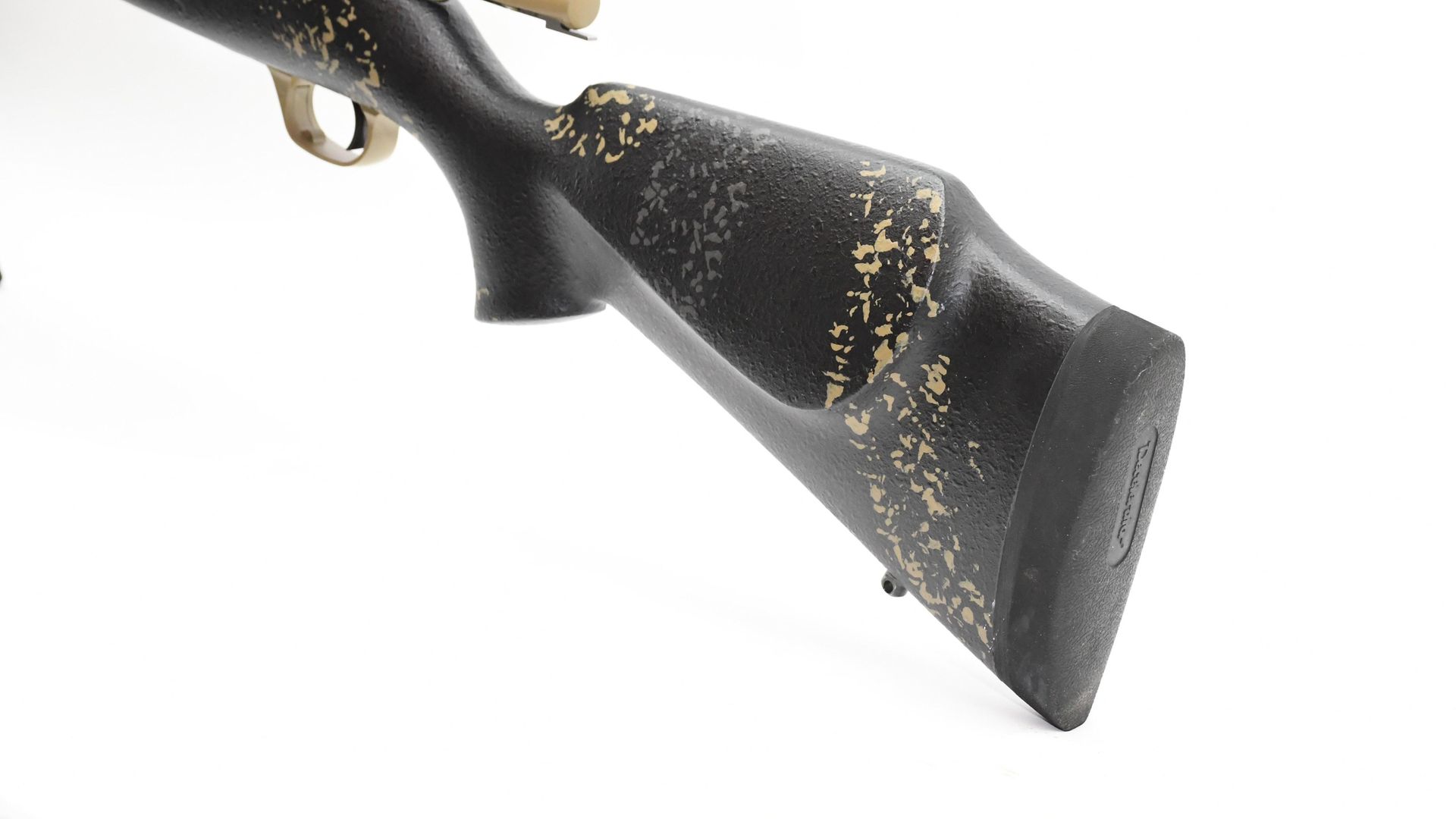 credit: Chris Parkin
credit: Chris Parkin
The Weatherby Mark V Carbonmark is a significant step up from the MeatEater seen a few months ago. This is more akin to the original Weatherby ethos of a specific rifle made for the serious hunter’s needs, rather than just a rebadged twin-lug-bolt factory rifle. You can have the six-lug action in other stock options, all offering the same premium finishes on their barrelled actions.
 credit: Chris Parkin
credit: Chris Parkin
Weatherby Mark V Carbonmark - first impressions
The most striking feature is the carbon-fibre barrel. It’s something that often sets off alarm bells in my mind, but read on as this one is a performer and was given only one night on stage to show its talents.
It begins with a 5/8"x24 finely cut thread tipping the inner 416 stainless, machine-fluted barrel hiding under the carbon skin. A pepper-pot brake is supplied with a Coyote Cerakote to match the other action steelwork and stock highlights. The overall diameter is 23.6mm, so it’s chunky yet in a well-proportioned length for a hunting rifle, with a 22"/560mm overall parallel extension from the action, 435mm of which is carbon fibre spanning the steel tenon and muzzle/crown region.
The stainless-steel inner is tensioned within the jacket, which unlike simpler carbon offerings doesn’t contact the barrel much at all. This 95% of free space allows some airflow and a clearer solution to thermal expansion between the two materials, which without physical contact minimises the inherent insulating properties of the carbon fibre.
Moving back towards the fibreglass composite stock, the barrel is truly free floated in the forend, offering safe clearance and enough stiffness to avoid any intermittent barrel contact. The forend was running a Spartan magnetic socket for the supplied bipod, which includes a sling stud. I was also sent a sound moderator; I’m not really going to run a brake on a 6.5 Creedmoor because recoil is very light, and I prefer the noise reduction of a mod for a sporting rifle. But later it was nice to note that the super-stiff barrel suffered little POI disruption when swapping between the mod on and off.
The composite glass-fibre stock features a contrasting multi-tone black finish with gentle stippling on the matt areas for grip throughout its length. Additional grip on the forend is supplied by the trapezoidal shape offering plenty of space for fingers, without interfering with barrel harmonics.
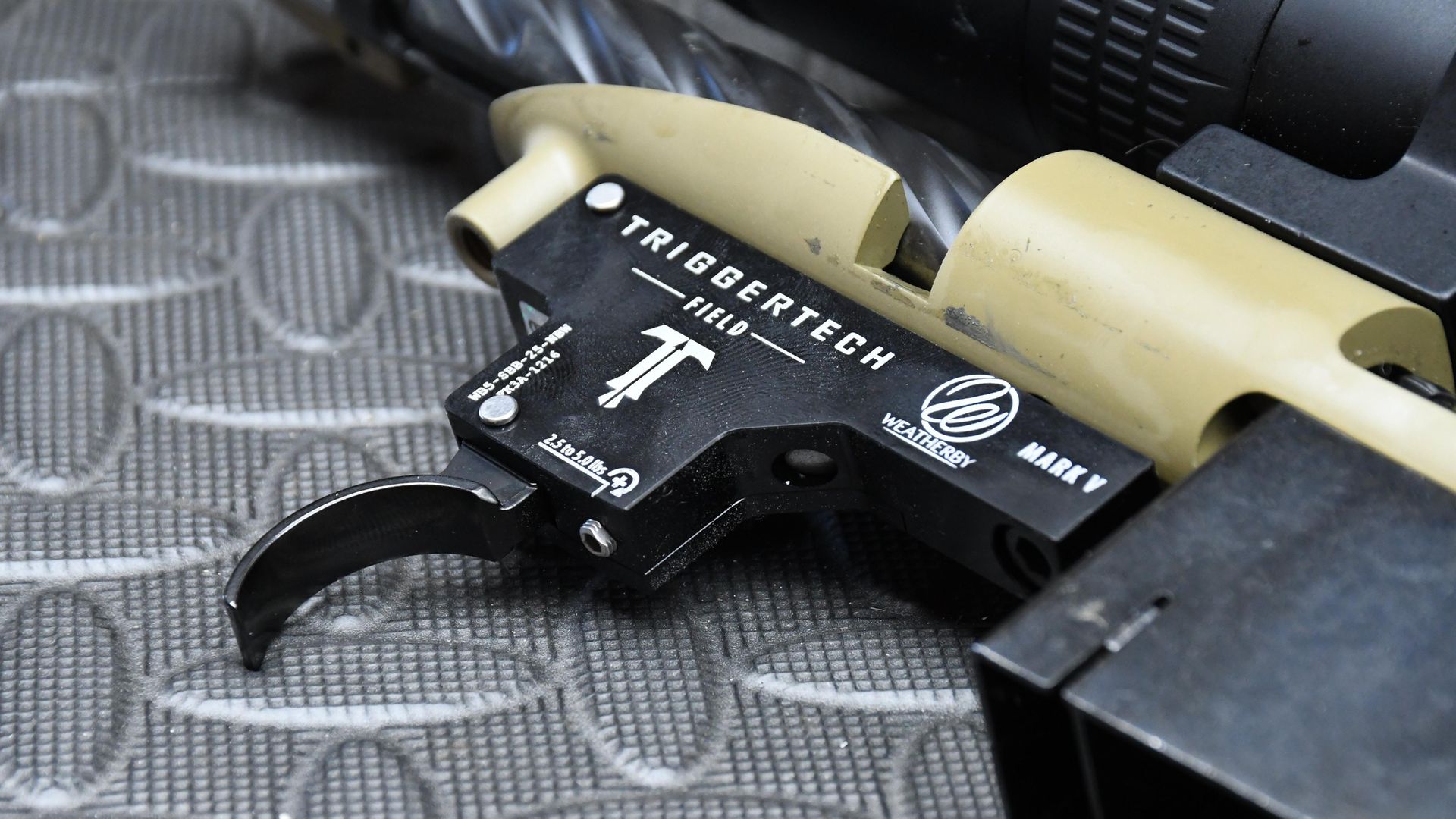 credit: Chris Parkin
credit: Chris Parkin
Weatherby Mark V Carbonmark - the finer details
The centrally balanced stock is key to feel of the rifle and Weatherby have specified well here, as although the gun is fundamentally light, it remains pointable and stable on target without feeling too floaty. The moderator helps here too, but it never felt incorrect with the brake either. The Spartan bipod also adds little bulk to disrupt the visual and mechanical harmony.
Back at the action, we see a six-lug push feed bolt face offering a precisely specified 54° bolt handle lift to cock on opening. Receiver, Accubrake ST and trigger guard all share the Coyote tan Cerakote, contrasting with the graphite black of the bolt and bolt knob. Combined with the stock’s grey and similar tan finish, this is one of the most integrated-looking rifles I can remember seeing from a factory producer.
Trigger pulls are crisp, with slick bolt operation offering minimal jamming opportunities over its 100mm travel – with even deliberate intent. The 17.6mm shaft is spiral fluted with a well-proportioned handle showing a spherical tip for true hunting design and operation.
The shroud’s right-side safety catch offers forward for fire and rear for safe with bolt handle locked shut. The underlying TriggerTech unit is a fine piece of kit that is weight adjustable and comes with clear instructions. It’s laser engraved and not a hint of threadlock on the aluminium/steel components.
Breaking weight was set at 1,150g/41oz and there is a spacious trigger guard. The stock’s grip is ambidextrous, with an open radius pistol grip with approximately 70mm reach onto the blade. I certainly never felt it to be short, like an AR-15 for example. The pad of my finger sat just right on the smooth curved black blade, with about 3mm of travel after firing.
Weatherby use a floorplate magazine system accepting five rounds plus one in the chamber if necessary. Single rounds dropped into the ejection port will also feed direct to the chamber for backup shots. A Sako-style recessed extractor claw sits to the right side of the bolt face, which shows more delicacy with slimline lugs surrounding it rather than raceways to run along like a twin-lug bolt, which will never be quite as smooth in transit regardless of coatings. Primary extraction was forceful, with minimal bolt lift to dislodge the fired case. Secondary ejection from the sprung plunger ejector was plentiful regardless of operation speed, with a silent safety catch displaying the refined, subtle character of a high-level bolt gun rather than just a regular twin lug 90° action.
You can appreciate the ease with which rounds are picked up and fed to the chamber from the mag, the inherently smooth bolt transit due to the Cerakoted surfaces, and I’m also quite a fan of floorplate mags on hunting rifles – you can’t lose them! A switch within the trigger guard allows the floor plate to drop free and discharge unused ammo. It is set midway between the twin action screws anchoring the receiver to the stock. The front screw anchors to the recoil lug itself; the rear features an extended lug drooping from the action, which also locates into a socket in the inlet.
This gun avoids the usual American rifle sharp corner styling and hard edges. It is refined throughout but does appear to reflect its home market’s tastes in terms of stock design. The slender Monte Carlo comb offers good scope alignment and fits nicely under the cheekbone. There’s no jaw displacement and it’s not too low below the bolt/bore axis, yet the length of pull is very short at just 334mm/13.125" with a 25.4mm/1" thick recoil pad.
The pad grips your shoulder pocket well, but the gun feels small compared with its European counterparts. This will definitely suit some shooters and does mean you never feel a long reach to the bolt handle when shooting fast, standing or prone, but Weatherby don’t seem to mention any available spacers. Fit and finish are all excellent, with no untoward harmonic issues from the stock from either firing or handling.
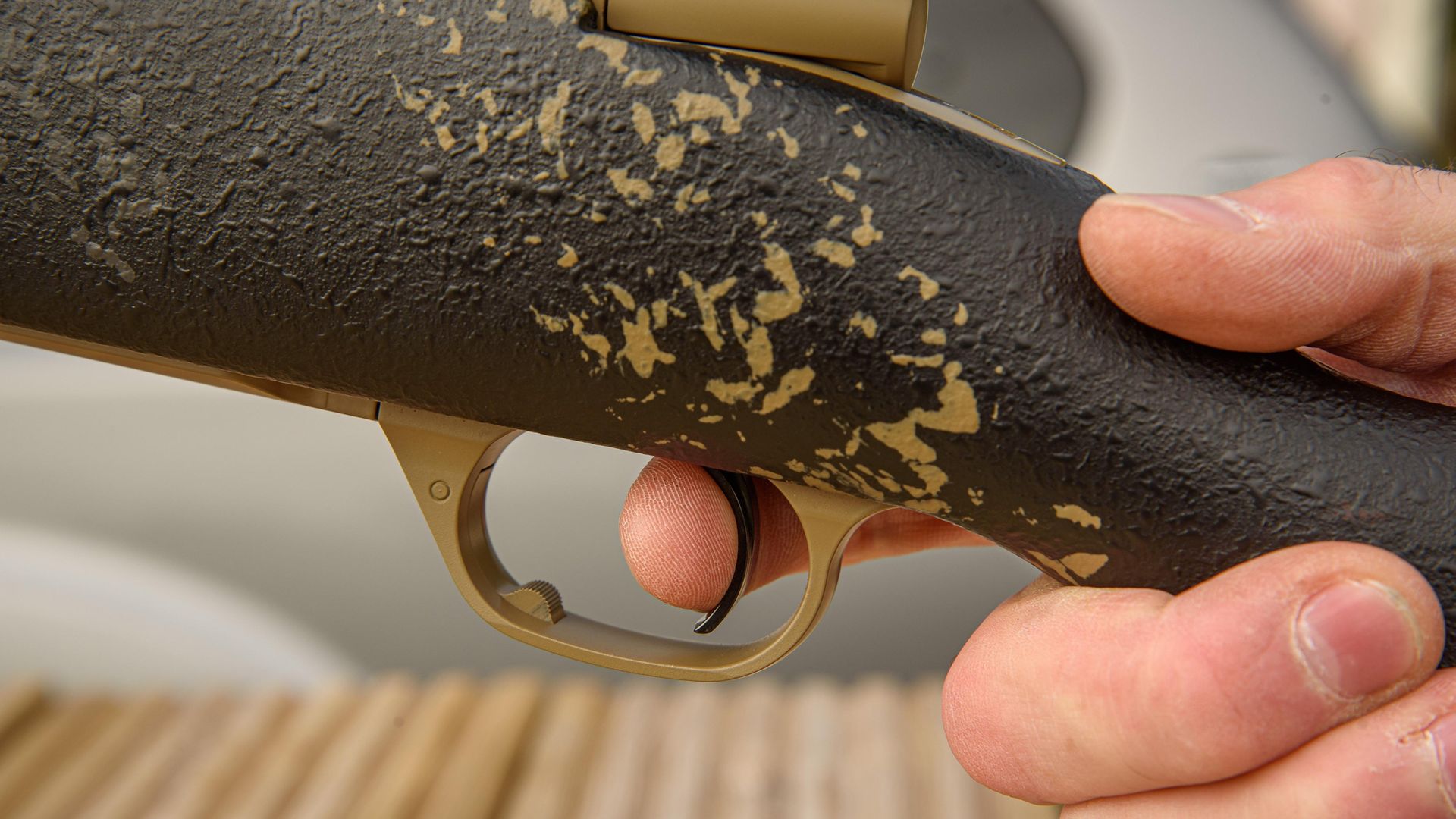 credit: Chris Parkin
credit: Chris Parkin
Weatherby Mark V Carbonmark - shooting test
Rem 700 action dimensions are maintained for scope mounting and this rifle was supplied, I was assured, ready to shoot and zeroed. Talley mounts were fitted with a trustworthy GPO scope, so with moderator fitted I set off to the farm. The load supplied was 120g Barnes Vor-Tx and Weatherby give a three-shot sub-MOA assurance for their rifles with premium ammo such as this.
I would normally use a wide selection of conventional lead and non-toxic ammo with a review rifle but wanted to run this one as suggested, so the first three shots were set up with care and attention was paid to getting it right first time from a cold bore. I’m happy to say it delivered on its promise, with a three-round group of exactly 24mm centre to centre, with the mean point of impact 25mm/1" high (central windage) at 100m.
As it was a carbon barrel, I wanted to see how stable and comfortable it was with temperature increase as it was fired for longer strings. I used an additional 12 rounds from the single box to make that happen. Group two, 28mm; group three, 31mm; group four, 22mm and group five, 30mm, giving a 15-shot average of 27mm. That is more than an inch or 1 MOA you may say, but this is the real world, and my target was 100m, 9% further than 100 yards. I’m also not measuring to a questionably ‘precise’ three decimal places; these are real-world reviews! This all gives me around 27.5mm to approximate 1 MOA. I generally find copper ammo fussier than lead, with fewer choices, so in achieving the specified accuracy, if only by a slim margin, I’m satisfied.
Had there been zero wind and multiple ammunition types to try, I’m sure this result would have been easily bettered. Copper jacketed lead hunting and match ammo almost always outperforms copper on paper in most guns. I have nothing against copper; I’m just stating my findings after 100s of rifle reviews and countless ammunition types.
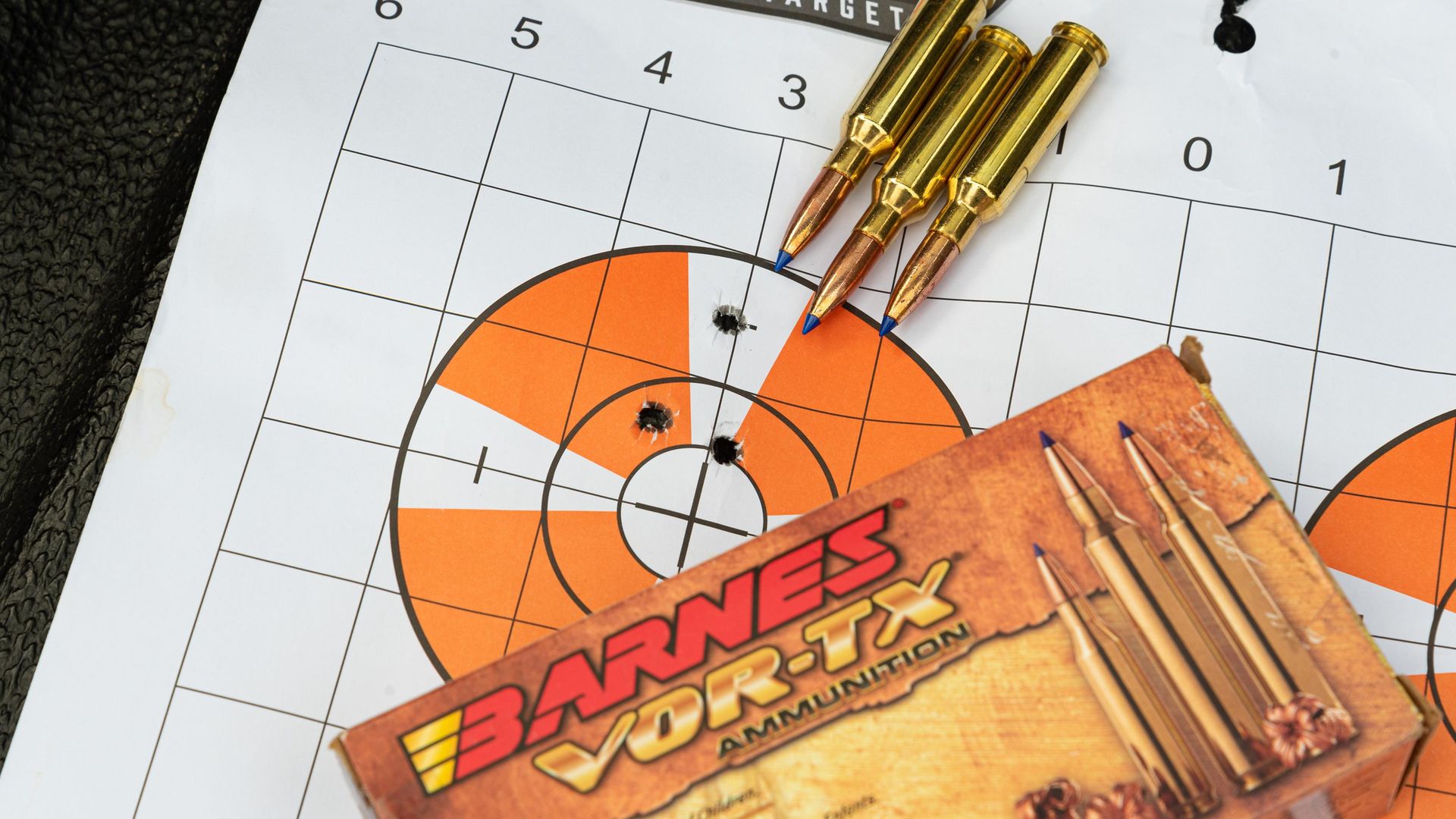 credit: Chris Parkin
credit: Chris Parkin
Weatherby Mark V Carbonmark - test conclusion
The Carbontech seems more of a true Weatherby to me than the Vanguard. This gun carries that tough hunting charm so beloved of the brand’s fans, with attention paid to detail. Small features like the safety catch on the bolt shroud to lock the firing pin are appreciated and it’s certainly true the six-lug bolt offers short lift and is scaled to cartridge length correctly.
I like details such as the scallop at the front of the receiver opening, minimising the chance of any bullet meplat damage as you load through the top, and the gun’s adherence to technical merits rather than marketing hype alone, of which I could detect none. Multiple gas escape vents on the bolt shaft hark back to days of hard loads being pushed and likely failures of primers, which we see so rarely now. I’m glad Weatherby didn’t change what works, adding safety with no detrimental effect, alongside modern fluting and Cerakoting to improve functionality.
US rifles often get rather expensive over here, but the Weatherby seems to have remained reasonable for the gunsmithing skills on offer. Bedding, no matter how minor, always impresses me when coupled with knowing why it is beneficial, not just because it looks good, and for that I compliment Weatherby.
This rifle is to my mind a complete contrast to the MeatEater, and other than a longer length of pull being made available by removable recoil pad spacers, I really can’t criticise it. I would have loved to test more ammunition, as the carbon barrel was the finest I have yet used, maintaining its point of impact for hunting accuracy for 15 rounds, where some struggle at five. The Weatherby/BSF assurance of only 5% contact within the barrel between the carbon and steel pays off, and going by muzzle temperature, where you can feel the steel (even though Cerakoted), the barrel does appear to cool more quickly.
A left-hander is available but I fear the limited calibre choices, although effective for hunting, will affect sales in the UK, where more conventional rounds remain the popular options. Roy Weatherby was the man who drove bullets hard and fast – bigger was better. But for non-handloaders, assured supply will always an issue, and not having a .308 or .30-06 listed is a shame.
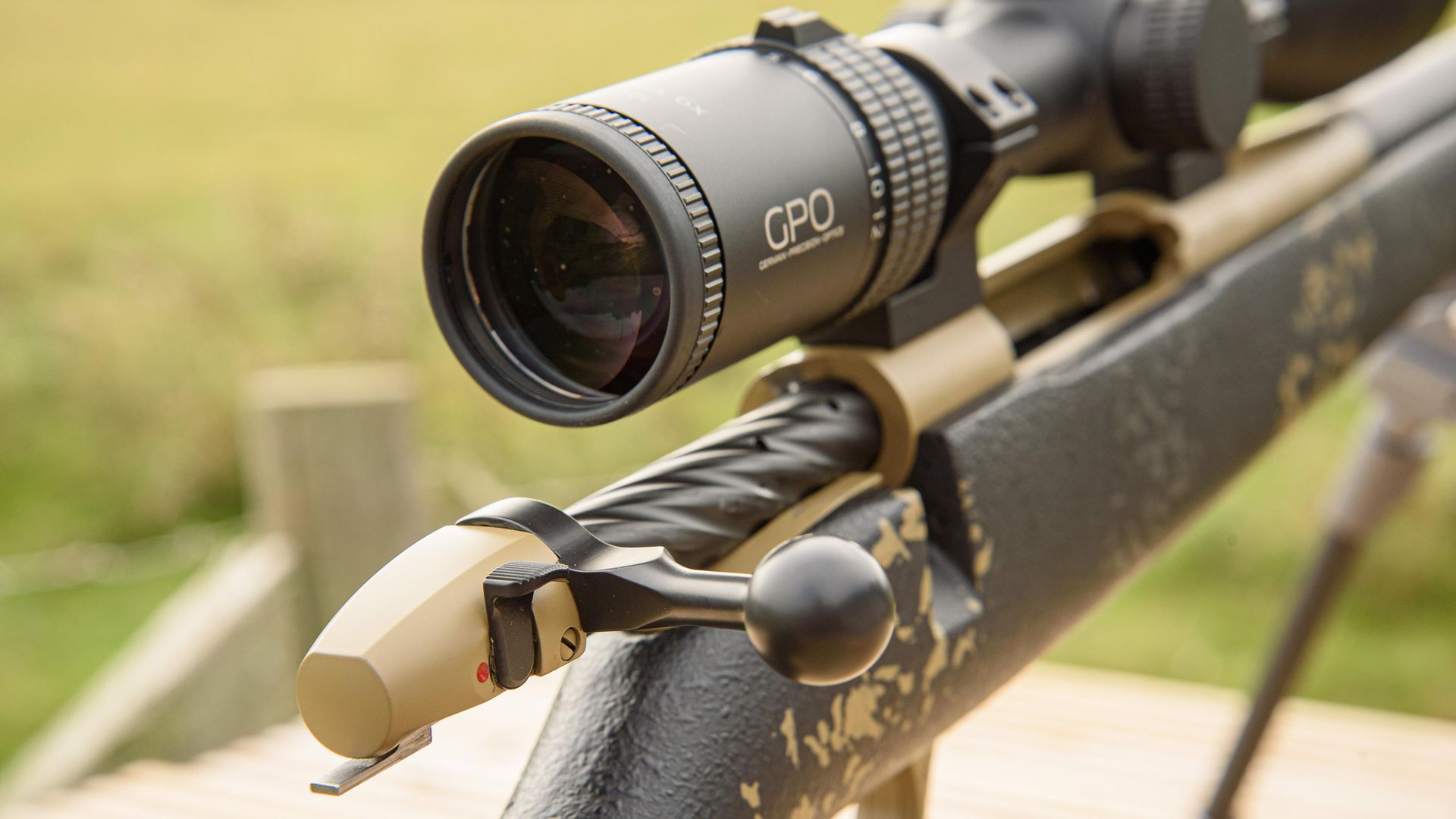 credit: Chris Parkin
credit: Chris Parkin
What is a Minute of Angle when rifle shooting?
All Mark V® rifles are guaranteed to shoot a 3-shot group of .99” or less at 100 yards (SUB-MOA) from a cold barrel when used with Weatherby® factory or premium ammunition within Two-Years of Verified Purchase Date to Original Purchaser.”
A minute of angle is simply an angular measurement, no different in concept to degrees or Milliradians. The MOA promise from many manufacturers is that their rifle will be consistent enough to place three shots within 1 MOA.
Technically, the range should not matter, as this is an angular measurement, but ammunition velocity and consistency rears its head as distances increase, so 100 yards is the norm. Technically, at 100 yards, one minute of angle is 1.047” and with my range of 100 metres (109 yards), adding an additional 9% to the distance.
I’m a metric guy anyway these days, far more logical and with mRad so popular I prefer to work metric throughout, but 1” is 25.4mm, so at 100 metres, 1 M.O.A. is 1.047x1.09x25.4=28.9mm. I’m not going to get too busy over group sizes, as they are often simply a matter of time spent finding appropriate ammunition, or tuning handloads, but there are the technical details, which in this case, the rifle surpassed and unlike manufacturers, I’m not using an underground test range in controlled atmospherics, just "down on the farm".
Returning to the armoury, I stripped the rifle from its stock for photography and more detailed look at the stock action interface, the Inlet. Weatherby’s action shows a flat underside around the integral recoil lug machined as part of the receiver. Bedding compound has been added to improve fit of the action and although minor, has a significantly beneficial effect in my opinion when done correctly.
It’s neat enough applied here and appropriate to the price point (but I have seen a few very scruffy jobs at high cost). Releasing tension from the front action screw saw no rise of the barrel from the forend’s tip (a sure sign of implied bending stress between the action screws) so I was happy with the layout and standards at this price point. The gun certainly felt snug and although flat screw heads rather than Allen or Torx, the action screws tensioned smoothly with a definite `stop` as the action was seated, no spongy squeeze into position, which is always a concern my experience.
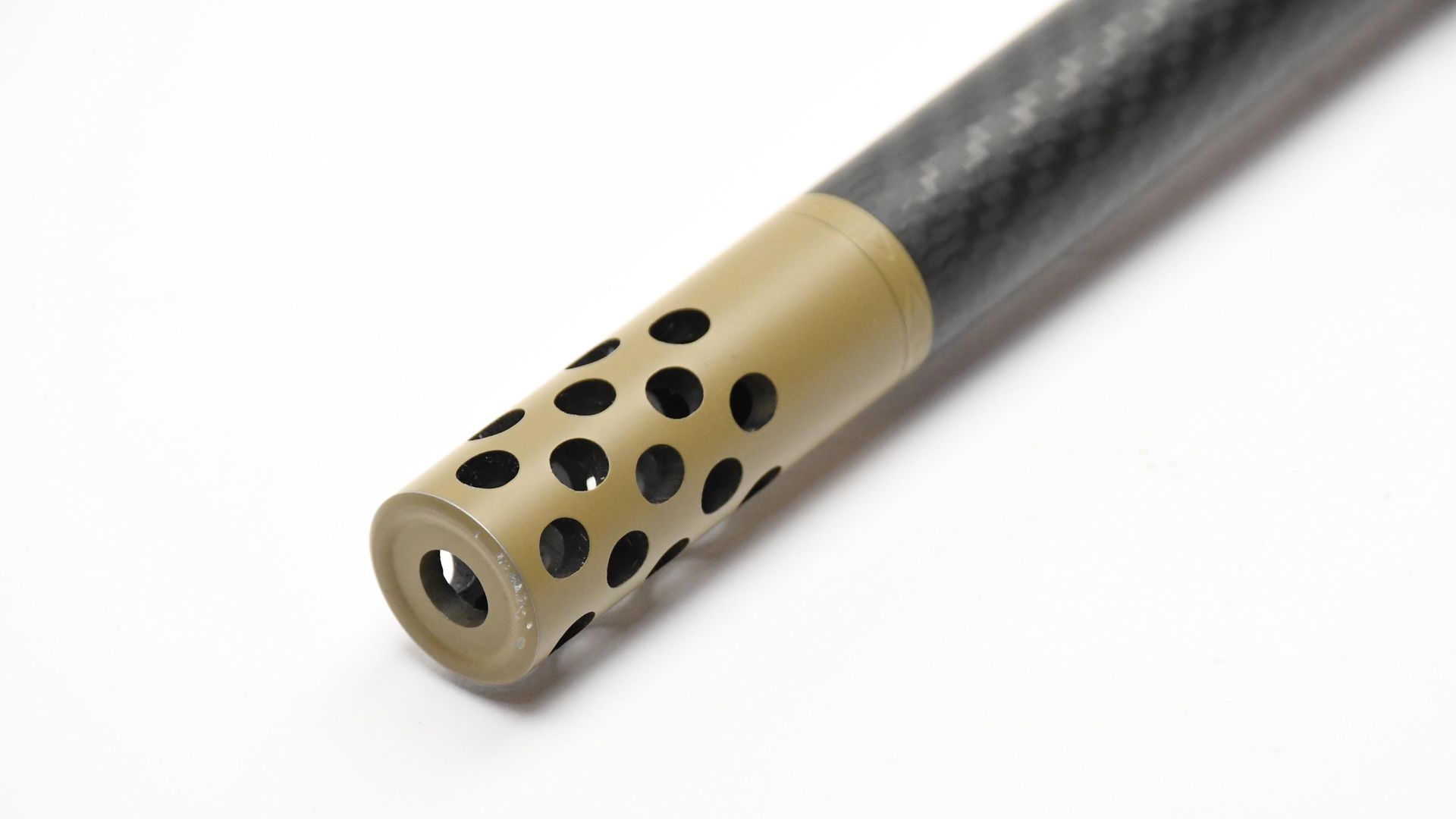 credit: Chris Parkin
credit: Chris Parkin
Specifications
Calibres: 257 Weatherby, 6.5 Weatherby RPM, 300 Weatherby, 6.5 Creedmoor, 6.5 300 Weatherby Magnum
Overall-Length: 1115 mm, 43.75″
Barrel-Length: 560 mm, 22″ Carbon outer 1-8” twist rate
Weight: 3.0 Kg, 6.6 lbs
Magazine: Hinged floorplate, 5 rounds+1
Trigger: Single stage adjustable set at 1150gr/41oz.
Safety: 2 Position with bolt lock
Stock: Composite Stock, Monte Carlo comb
Length of Pull: 334mm/ 13.125”
Prices: £3,320
Contact: www.raytrade.co.uk (also for Barnes ammunition)